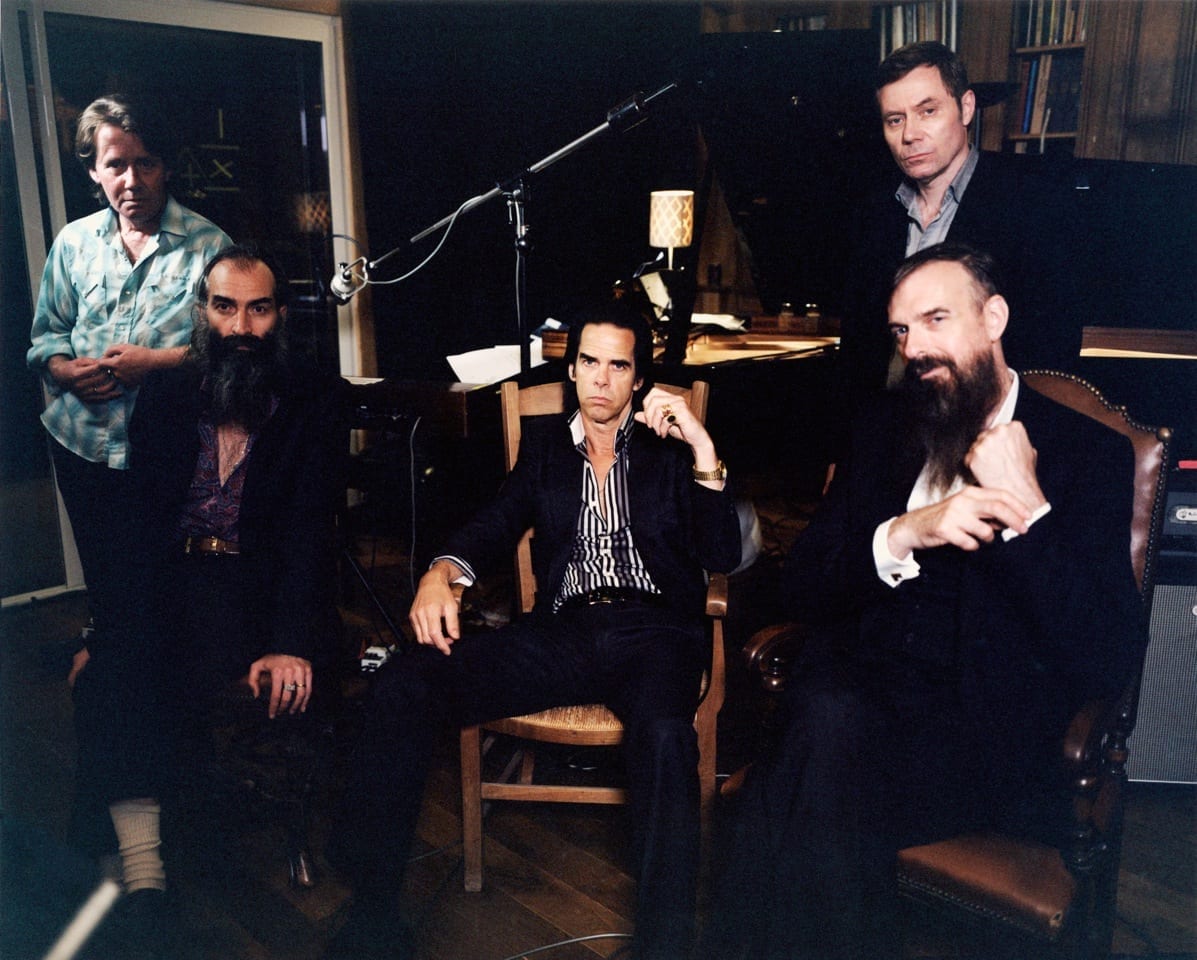Nick Cave and the Bad Seeds have released their sixteenth studio LP. Entitled ‘Skeleton Tree’, the album is a bleak, stark work of art, with occasional white-hot shards of pure beauty permeating through the music.
‘Skeleton Tree’ is a uniquely human record. For all its grief and sadness, it is still a document of humanity in the face of adversity. You might consider this a facile statement to make considering Cave’s tragic circumstances, his son Arthur died during the writing and recording of this album, but this tragedy is central to the whole LP. ‘Skeleton Tree’ is raw and at times harrowing, but is a testament to the Bad Seeds’s artistry. Where they were once theatrical and narrative, on this album the band seem more restrained, out of necessity, and unflinchingly personal.
Cave’s lyrics on ‘Skeleton Tree’ are now based less around characters, Lucifer, the tall handsome man, Mary Stanford, and based more around humanity, his own humanity. The prolix references to Christianity, and sin and good and evil, and dusty black coats are gone, to be replaced by plaintive, poignant statements like ‘I Need You’, and ‘I move/ you move’.
We see Cave’s humanity or even fallibility on show on this album. Rings of Saturn incidentally, the second song off the album, is a wonderfully off-kilter pop song, complete with glittering synths and a lovely warm crackle behind the whole track. ‘Rings of Saturn’ is featherlight and contemplative, the perfect foil to the track preceding it, ‘Jesus Alone’, which is droning and fatalistic.
‘Jesus Alone’ is possibly one of the best things that Nick Cave and the Bad Seeds have ever done. It’s difficult to express how perfectly its different elements come together: the low droning growl that underpins the whole track, the siren-like synthesizer, the barely audible harmonies, and the two sparse piano chords that is Cave at his wistful best.
Those imagining that the band might skirt around the issue of Cave’s son dying are sorely mistaken. On this album, he seems too exhausted to try and squeeze all this unbridled emotion into the constraints of verses, and choruses and middle eights. The ‘Skeleton Tree’ tracks seem more like pieces, than defined songs. In the past, Nick Cave and the Bad Seeds have stuck to acoustic instruments mostly, but on ‘Skeleton Tree’ things are a little different. The songs all have electronic textures that enhance the songs no end. The drones, the confusion, the jagged electronics, piano chords like splinters of glass all come together to create an album that seems to be a complete whole, rather than eight songs. You might even see the songs as a Skeleton Tree, eight bare branches but essentially connected as one.
In the accompanying film, ‘One More Time With Feeling’, Cave and Ellis talk about how on a record without this catastrophic backdrop, they might have tightened some things up, re-recorded this and that, however what the Bad Seeds have achieved through releasing it as a work in progress is more of a human record.
In ‘Skeleton Tree’ we have an ostensibly desolate album: the black cover, references to Cave’s ‘blue eyed boy’, and themes of pain, separation and (obviously) death. However, much like the cover, the music has chinks of light and beauty throughout. ‘Skeleton Tree’ is an unfinished document, almost a work in progress, and this is the reason it is so powerful. The last song, ‘Skeleton Tree’, all washy synths and soft drums, seems like a resolution of Cave’s grief; the last verse reads ‘It’s alright now/ It’s alright now/ It’s alright now’. The album is less a portrayal and more a chronicle of pain and suffering, and Cave’s attempt, not to try and master his grief, but to come to terms with it.
